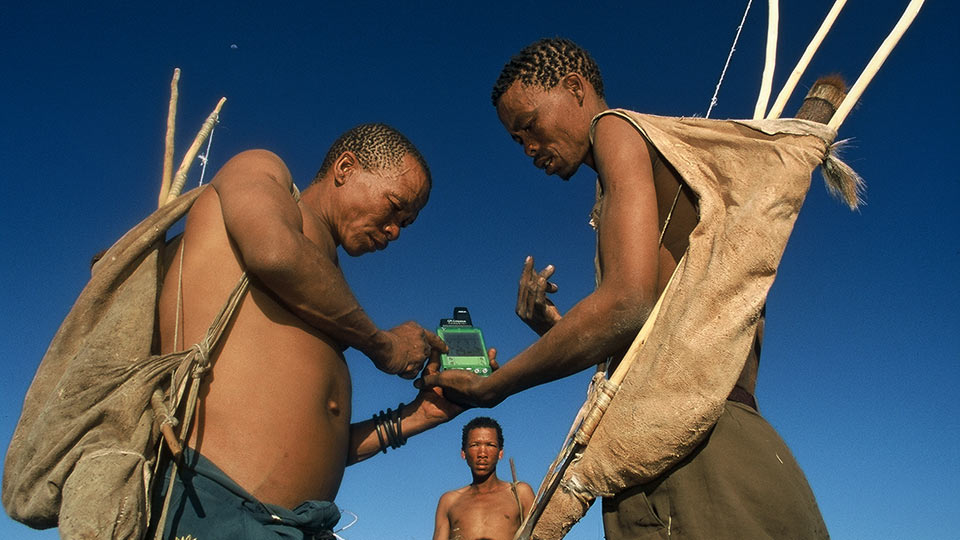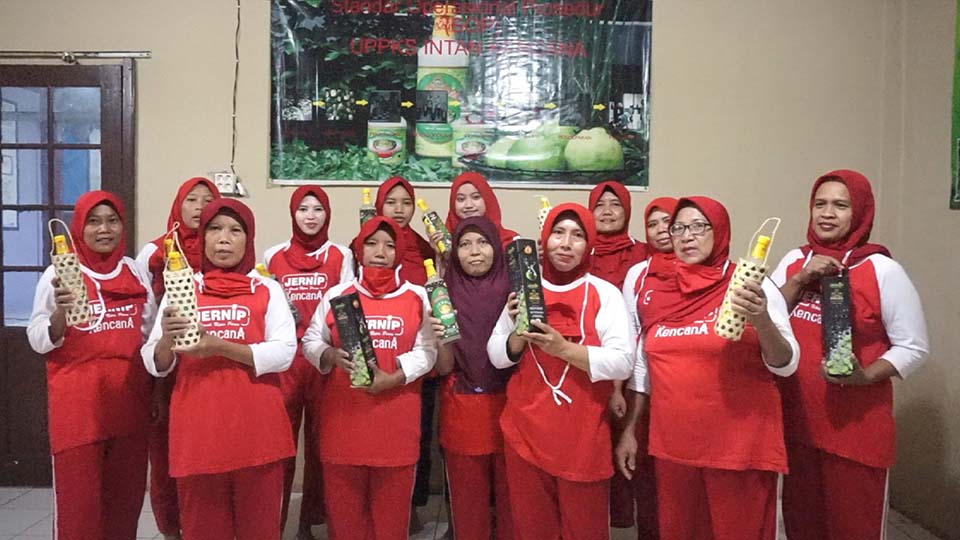A Passionate Vanilla Farmer Hopes to Put Samoa Vanilla on the World Map
Shelley Burich started growing vanilla in her native Samoa out of curiosity. Some sixteen years later, what started as a hobby turned into a passion and a full-time job, as she is now the sole vanilla farmer and producer in the country. She owns Vaoala Vanilla and is eager to encourage other farmers to launch into this lucrative but high-maintenance crop so that Samoa becomes a global organic vanilla supplier.
With many hats, Shelley defines herself as an indigenous Samoan entrepreneur and farmer. She is also a mentor for the Global Green Growth Institution, an e-commerce trainer, the current Secretary for the Samoa Apiculture Organization, and a Board Director for the Scientific Research Organization of Samoa.

Introduced to vanilla some 16 years ago by the Samoan Prime Minister who planned to launch the vanilla industry in the country, Shelley was one in a group of 60 farmers and growers who took interest in the project. After a one-week training workshop, each participant was given vanilla cuttings.
“I had never seen vanilla before and to actually see the plant where the vanilla extract I used for baking came from certainly piqued my curiosity.”
Shelley received 50 cuttings, and over the years, grew it into 1,000 vanilla vines. She had a full-time job and took vanilla farming, on her residential property, as a part-time hobby, which she turned into a business a decade ago. However, it was not until 2020 that it became a full-time job. “For a very long time, I did not call myself a farmer, I thought I was just growing vanilla and learning.” “What started as a hobby, turned into a passion, and pushed me into a business that is now selling domestically, internationally, online, and in person,” she said.
Growing Vanilla Beans
Vanilla, Delicious and Demanding Orchid for Patient Growers
Vanilla, Shelley explained, is a member of the orchid family and is a vine that grows on a natural or artificial support. Like a vine, it grows continuously and needs regular trimming and tending. “if you don’t look after it, it will do nothing for you.”

Patience and perseverance are two key ingredients to growing vanilla as it is a long-term commitment. It takes about four years of maintenance, controlling, and feeding for a vanilla cutting to mature and be encouraged to produce flowers. “You don’t see a return on your investment in terms of financial benefits for at least five years,” she explained.
Vanilla growers have to hand pollinate flowers, as the only bee in the world that can pollinate those flowers is the tiny stingless Melipona bee, which is native to Mexico. If growers are successful with pollination, a bean will grow… and will take nine months to mature on the vine. “From the time you get a flower to the time when you export your beans, creating value-add vanilla products, it is basically one year before you get a return.”
Vanilla Processing Steps
Exporting the Best Beans but Nothing Goes to Waste
Shelley estimates that she can yield from her small farm between 15 and 20 kilograms of green beans per annual harvest. Processing the beans reduces about 70 percent of the moisture so she ends up with 8 to 10 kilograms of processed product.

“Everything is done authentically,” she explained. After harvesting, the vanilla beans go through a hot water bath to kill any bugs that might be on the beans and to stimulate the natural processing. Then the beans alternate between “sweating” in plastic sheets to drying in the sun for about 14 days. After that “sweat curing”, the beans are starting to lose moisture, they are brought inside for in-house curing to continue drying. They receive a hand massage to encourage the oils and the aroma to develop. “If you don’t do that and are not following the processing technique, the beans will have no aroma and very little flavor,” she insisted.
She exports only her grade 1 beans (grades go from 1 to 4 or A to D), which are 15 cm and above in length, have the right moisture, and are not split. The beans are exported to two eager spice companies in the United States. Grade 2 beans are packaged and sold on the domestic market, and grades 3 and 4 are turned into vanilla syrup or extract.
Covid-19 Crisis Turned into Opportunity, selling Vaoala Vanilla online
The Covid-19 crisis had an unexpected outcome for Vaoala Vanilla. Before the crisis, Shelley used to sell at organic markets, and approach restaurants and bakers. When Covid hit, she had to find a way to keep selling. She took an online course on how to build an e-commerce site, and nine weeks later, in August 2020, launched her website. “That took me out of Samoa,” she said, adding that she now had consumers buying from the website from all over the world. “It’s been a big success.” She also has a YouTube Channel, providing tips and information on growing vanilla.
Increasing Vaoala Vanilla Production

One of Vaoala Vanilla’s challenges is to grow its supply capacity. “I created a demand for my product and to meet that demand, I need a bigger supply.”
Working mainly on her own because of a dire shortage of workforce, Shelley has been trying to encourage and train other farmers and growers interested in growing vanilla so the demand can slowly be met, and Samoa starts building a strong vanilla industry. From the 60 people she started learning with, 16 years ago, she is the only one who kept growing vanilla.
Vanilla is the second highest-valued spice crop after saffron and Madagascar is the prime supplier with over 80 percent of production. There is thus a lot of potential for the Pacific to close that gap and become a large player in vanilla exports, according to Shelley.
Vaoala Vanilla, a meaningful trademark
With the name of the company chosen for a long time and a logo designed by a hired graphic artist, Shelley had her branding ready. However, as a participant in the Samoan branding bureau activities, under the Ministry of Commerce, Industry and Labour (MCIL), and in collaboration with WIPO, Shelley learned that a story behind a brand is very important. A brand, she said, is not just a logo, but who you are and what your business means and symbolizes. “I also understood the importance of trademarks and of registering IP.”

Shelley just registered her logo and her trademark Vaoala Vanilla. She picked that name because Vaoala is the name of the village where she lives and where her vanilla adventure started. “Vao” also means trees or wooded area, and “ala” means to awaken, to enlighten. “Vanilla grows on trees and needs their shade, and ala for me is the flower, that only wakes up in the morning.
Shelley said she would encourage other women, growers, and entrepreneurs, no matter how small to believe in what they are doing “keep going and make sure you are doing it the right way and register what we need to protect with our branding, logo, and trademark.” “The IP journey has been a big learning curve for me and I will impart it to other entrepreneurs that I train and mentor.”
Samoan Organic Vanilla
Growing organic vanilla is of prime importance for Shelley, as she also defines herself as “a strong food warrior, promoting the organic farm-to-table social movement.” As the Chief Executive Officer of the Samoa Cancer Society for six years, “I saw the effects of pesticide use with the rising amount of cancers and leukemia in children and adults,” she said, adding she has been advocating for a pesticide ban in the country. Her property has been organically certified for the last 15 years.

“I turn new farmers and growers that I mentor and train to organic farming.” She said. “I teach them how to compost and mulch, using what they already have on their land, and I teach them the natural farming methods, which includes making your own natural fertilizer.” “If they want to sell their green beans to Vaoala Vanilla, they have to turn to organic farming. I will not buy any beans that have been sprayed with any type of toxic chemical,” she insisted.
Shelley intends on putting Samoa on the map as a viable Pacific and organic vanilla producer, and she said being organic is key to creating a niche market.
She also asked the Samoa Scientific Organization to test some of her beans for moisture content and vanillin, but also to identify the unique flavors and aromas that might be in the Samoan vanilla. Her international buyers never stop praising her vanilla, she said. “Maybe it is my process, or the fact that I grow two varieties together, or the environment, or the love I put into it,” she added, smiling.



